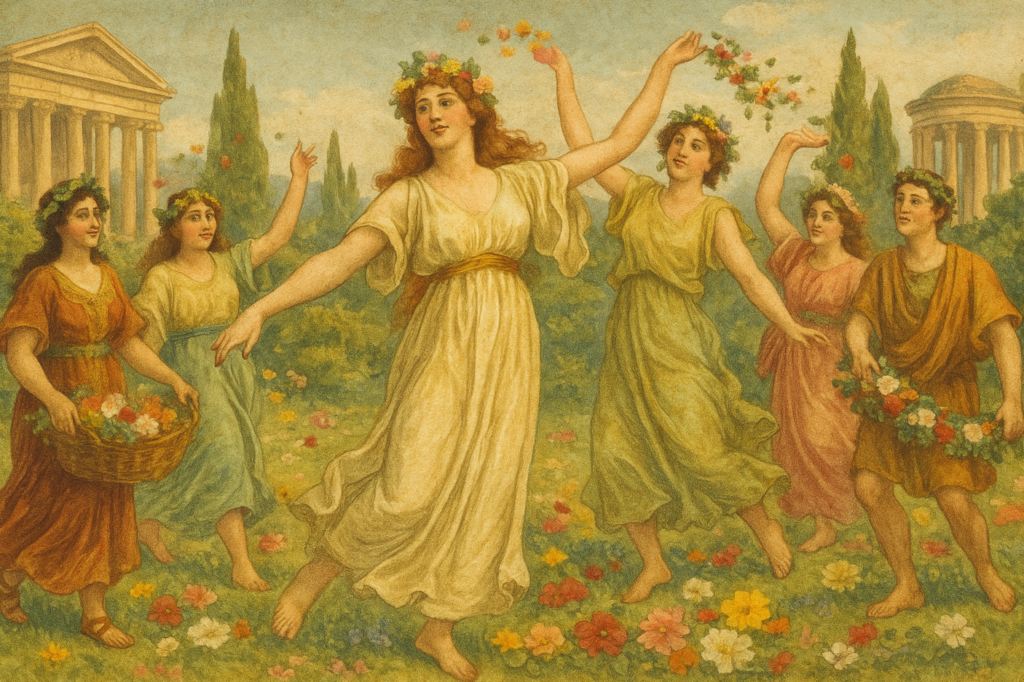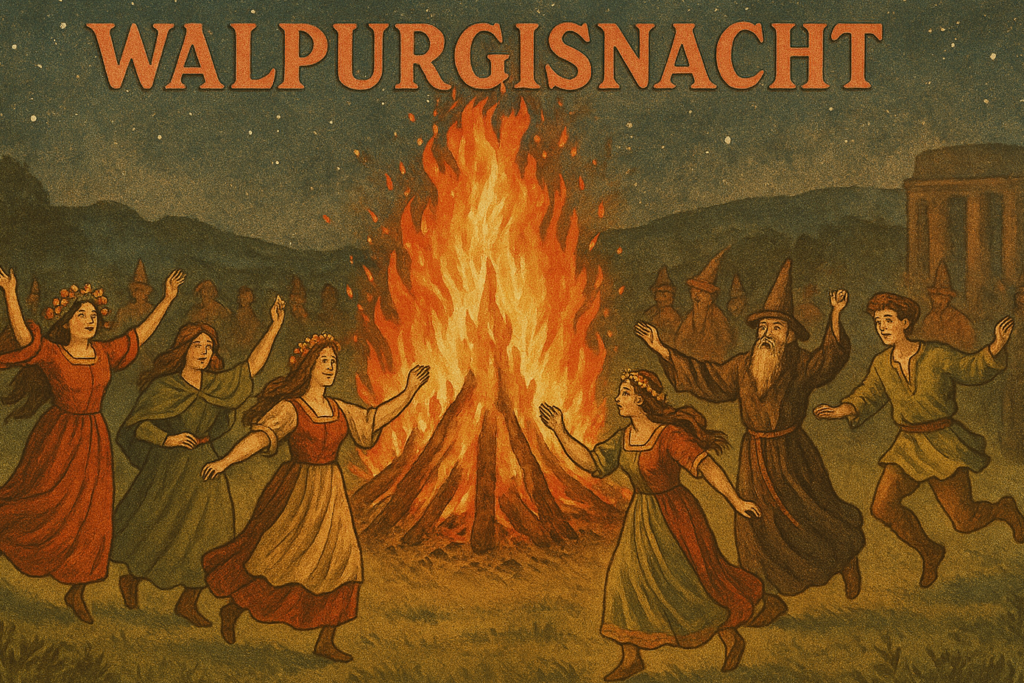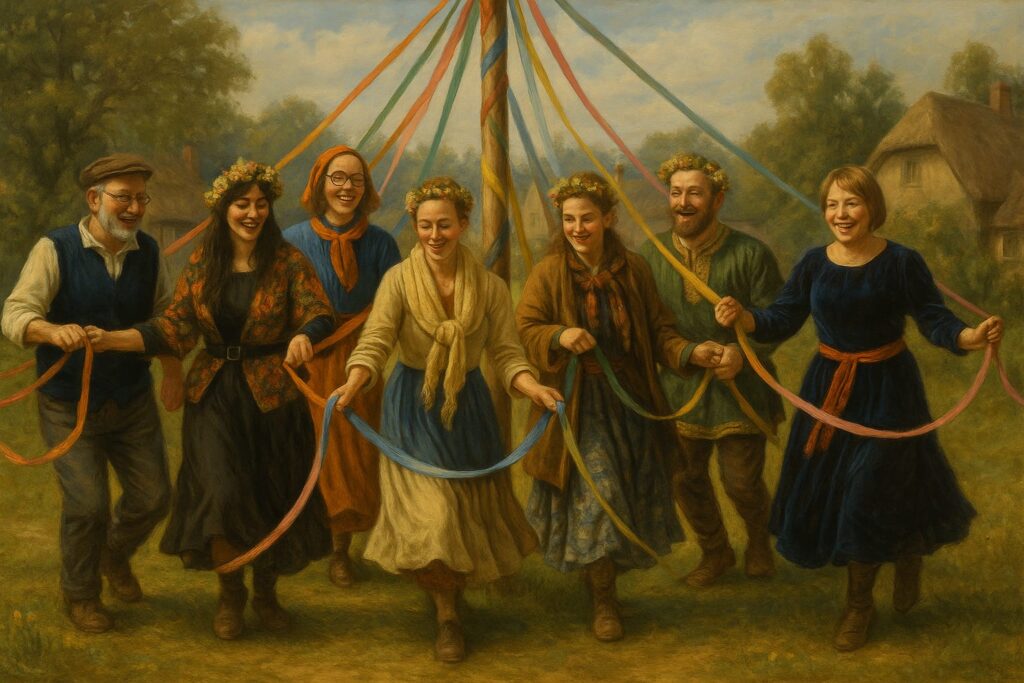May Day, a day we associate with dancing around maypoles (at least in rural areas) and the coming of Spring, and maybe a long weekend. We think of May Day and we think of flowers such as Daffodils adorning the various woodlands and road sides around us and people gathering wildflowers for garlands. But what actually is May Day? What are its origins? And why do we celebrate it the way we do? It turns out that May Day is actually extraordinarily ancient and has its origins in many different deeply historic and pagan festivals. It also has strong links to International Workers’ Day (known as Labor Day in the US.) We are going to take a little deep dive into the history in this blog and try to get a better understanding of this incredibly old holiday!
Very Early Origins
May Day has its origins in a number of different ancient festivals from across Europe as it was generally a celebration of Spring and the returning warmth with the beginning of Summer. The most ancient of these appears to be that of Floralia, an ancient Roman festival celebrating the goddess Flora. Flora was the goddess of Spring, flowers, youth and fertility. She was one of the twelve deities of traditional Roman religion and had her own priest called a flamen. Her temple in Rome was located next to the Circus Maximus. The festival was held on the 27th of April and usually ran for a few days. The point of the festival was to please Flora and in return she might protect the precious blossoms that would ensure a good harvest in the many orchards and fields. Usually her festival would see a bigger celebration if, the year before, the blossoms had been affected by poor weather or any other disasters.
Great games were held during the festival, called the Ludi Florae, and comedies called farces were put on for the masses. Mimes would also perform for the people and usually all performances around this holiday would have a lewd or sexual nature to them, often with performers naked. Prostitutes around Rome saw the festival as their own and would be allowed to perform naked routines and dances in the circuses and arenas and some antiquated sources suggest that they would even partake in special gladiatorial games as well. Giant phallic totems were built in squares alongside this. People, instead of the customary white clothing, would instead wear bright colours in public, if they could afford them, and they would release hares and deer, symbols of fertility, into the streets as offerings to Flora asking to protect gardens. Chickpeas and garbanzo beans, also symbols of fertility, were sold in the circuses for snacks and were often thrown by the crowds like confetti. A rite called Florifertum was also performed where wheat ears were taken into a shrine and offered to the goddess.

Other parts of Europe celebrated similar festivals to call in the end of Spring and the warmer days to follow, In the gaellic countries surrounding England (Wales, Scotland and Ireland) fire festivals were held in which shepherds would bring livestock up to great bonfires and lead them around them in circles, often leaping over the flames in a rite that was thought to ensure a good breeding season and fertile crops. In Germanic and Scandinavian countries, the observance of Walpurgisnacht (St Walpurga Night in Germany), Vappen (In Finland and Sweden) or Hexennacht (In Holland and Bavaria) are linked with May Day and are celebrated at the same time. Walpurgisnacht is the christian celebration of the canonisation of St Walpurga, an anglo saxon saint in the catholic faith who was associated with healing and medicine. Often, however, the festival is also associated with witches. It is likely that the original pre-christian festivals were to do with the driving away of evil spirits from the lands as the colder days warmed with the end of Spring. This changed when christianity came in, to the driving away of witches (often pagans who continued to worship nature.) Traditionally in Germany, it’s believed that Walpurgisnacht is the night that witches gather on the summit of the Brocken, the highest peak in the Harz mountains. Bonfires are lit, much in the same vein as other European festivals around this time, in order to drive away the witches. Today, in the Czech Republic, effigies of witches are burned on bonfires, much like the guys on British Bonfire Night.
It is believed that the lands become stalked by phantom hounds during Walpurgisnacht and as a result people traditionally leave out offerings of Ankenschnitt, bread spread with butter and honey to appease them and keep them from haunting your home. Traditionally, revellers also drink sparkling wine, sima and mead, the last two also being made from honey. Garlands of flowers are collected and used to adorn towns and homes and people often wear costumes in the evening, seeing Walpurgisnacht as almost a second Halloween. Fireworks are also often let off once the sun has set and folk songs are sung in pubs and public places.

The Mystery of The Maypole
Most of us are familiar with the maypole, the tall wooden shaft with flowers and colourful ribbons adorning it, and people dressed in white and floral costumes dancing around it, holding the ribbons. It is something often seen in more rural parts of the country, including here in East Anglia, and is still a tradition the world over. But what does it symbolise? And where and when does it come from? Well, the truth is, nobody really knows, and it’s still a hotly debated topic among historians. The tradition is simply so old that all original meaning to it has been lost. It is believed to originate in Germanic and Scandinavian cultures and several hypotheses have been put forward, but we simply may never know. The earliest that the maypole is recorded as appearing in England is between 1350CE and 1400CE and by the 1500s, they were in use across the country.
As suggestions for the origin, some historians say that the maypole was simply brought out every May Day and in previous iterations of the festival, to show the happiness and warm colours that appear in Spring. Some scholars argue that the maypole may be to symbolise the world axis, and the dancing around it to celebrate the rotation of the earth, but this suggests a knowledge of physics that simply didn’t exist when the tradition started. With its origins in Germanic paganism, there are other important symbols it could be representing. Trees were very important to ancient pagan people and it could be that the maypole represents a tree. Furthermore, in ancient Scandinavian and German beliefs, the world (Midgard) sat on the branch of a giant “world tree” called Yggdrasil alongside many other realms or worlds. The fact that, without light pollution, a branch of the Milky Way stretches visibly across our night sky like a giant tree branch covered in lights could account for this.
Another suggestion is that the maypole is a phallic or fertility symbol, as these often appear in pagan symbology as well. 17th Century philosopher, Thomas Hobbes, wrongly believed the poles went back to Roman worship of the god Priapus, a god of fertility and male genitalia, although Roman origins of the maypole have no evidence to support them.
Regardless of the origins, in England the maypole has been utilised for many centuries and became increasingly popular in the 1400s. They became symbols of community and joy and poorer rural communities would save up for a maypole throughout the year. Some poor communities would even team up with neighbouring villages to get a maypole, bringing the two communities together in celebration. However, some villagers, jealous of their neighbours if they had a particularly large or impressive maypole, would sneak into their village squares and steal their maypole, leading to violence! When those jolly puritans started to gain momentum in the 17th century, they unsurprisingly took issue with them, describing them as “pagan idolatry.” The maypole has been banned by many different christian sects on and off for this reason, and when Presbyterianism took a deep hold in Scotland, the country banned them altogether which is why it’s seen as a more English or Welsh tradition.

Sources
https://oaktreemobility.co.uk/help-and-advice/travel-and-things-to-do/the-history-of-may-day
https://www.britannica.com/topic/May-Day-European-seasonal-holiday
https://web.archive.org/web/20160503172743/http://www.mythindex.com/roman-mythology/F/Flora.html
https://www.thoughtco.com/floralia-112636